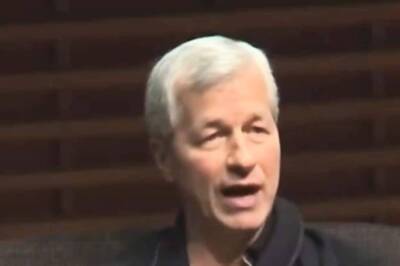
views
“How often will I use this quadratic equation other than learning it for exams?” is a popular dialogue among students when they study mathematics, isn’t it? Every student’s way of learning is different and the way many of them view maths, especially statistics does not particularly capture their interest beyond classroom problems and tests. But it is observed that statistics becomes far less boring or daunting once children feel comfortable with the concepts linking them to their favourite subject.
For example, if a child is more interested in biology, it is important to help them understand statistical problems like studying the effectiveness of a medicine using 100 patients as data set. Helping students see how widely statistics is used in their life after school and college will make all the difference in changing their perception about it.
Statistics is collection, analysis, and interpretation of data and devising conclusions based on those findings. Many things we experience in day-to-day life branch out as career streams in different fields. Let us enhance children’s appreciation for statistics by looking at some of its applications across various fields:
Predictions: Many people have the habit of watching weather forecasts or checking the weather updates on the phones. So where does this information and prediction about the weather come from? It is because of computer models built on statistical concepts that compare and calculate the forecast. Medical researchers use statistics to predict the prevalence and spread of diseases. Engineers use statistics to predict the timeline of a project.
Biometricians use statistics to look for patterns to forecast the probability of an occurrence in the environment, which leads to on-site workers like constructors increase their quality control in field projects. Every sports team has statisticians who analyse data gathered from past matches and use it to come up with team strategies, game plan, and predict winning outcomes.
Testing and sampling: A free sample of chocolate in a grocery store or analysing a medicine before it is available for consumption. This is the process of testing using statistics to calculate the effectiveness and success rate of a particular aspect. Testing is used in clinical trials, making a software design available for few consumers for feedback, marketing a new product, and psychological research to study human brain. Census and sampling are one of the most significant concepts used by governments, like collecting data of citizens and understanding the population characteristics.
Business decision making: You have dinner by 9, you are in bed by 10 and you need 8 hours of sleep. Using this data to set your alarm for 6’o clock is decision making. This is a small example for a larger inference – using statistical data to make business decisions.
Traders use statistics based on market data to make decisions in uncertain situations, business leaders make decisions related to strategies and company policies, manufacturers produce goods based on customer demands. Government establishments too use statistics to make decisions like using the collected data to formulate plans about health, education, import and export rate, and budgets.
Finance and accounting: The most prominent use of statistics is in finance, banking, and accounting. The one where accountants create reports, balance accounts, where bankers lend loans, calculate interests, cover insurances, and more.
Information technology: Careers like data scientists and data analysts require a practical understanding of statistics. Data scientists must learn how to mine data using a combination of statistical equations. These equations are used to find the patterns and trends in the data sets. These patterns will help map with real-world problems and create solutions. For this, one must have strong knowledge of statistical reasoning like descriptive statistics, probability theory, distributions, sampling, and Bayesian analysis to name a few.
Children learn statistics without learning it in everyday activities like playing cards or tossing a coin. They might not realize the foundation it lays in the initial stage but will find statistics hidden in many career streams they aspire to pursue. The important thing is to learn its concepts, importance, and applications. Using such opportunities, educators and parents can help students advance their way towards a successful future through effective methods to teach them about statistics.
— Authored by Anand Prakash, Co-founder & Head of Academics, Vedantu
Read all the Latest News , Breaking News , watch Top Videos and Live TV here.

















Comments
0 comment